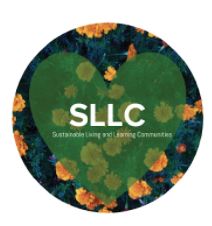The land now referred to as the SLLC originally belonged to and was managed by the Patwin band of the Wintu tribe, who have inhabited the area since 500 AD. When the land was acquired by the UC system in 1908, the land was first used for pomology research, specifically as an olive orchard. The legacy of this use can still be seen in the remaining olive trees and the naming of the Orchard Park neighborhood.
In 1989, the UC Davis Long Range Development Plan (LRDP) had designated SLLC land for the development of Aggie Stadium. Banding together, Students served as effective organizers in response to this threat and formed the Sustainable Research Area (SRA), a student-led coalition that advocated for the preservation of their communities. UC Davis decided to site Aggie Stadium elsewhere and twelve years later, in the 2001 LRDP, the SRA communities and land were preserved “as is” in response to Student community concerns. There was little to no mention of the future of the spaces, and the communities weren’t targeted for future development plans.
Between the years of 2001 and 2013, several SRA organizations faced threats of closure. The group’s lack of institutional support made it difficult to consistently maintain organizational standards and structure. However, by working together with organizations such as the Solar Community Housing Association (SCHA), Associated Students of UC Davis (ASUCD), the Agricultural Sustainability Institute (ASI), and the College of Agriculture and Environmental Sciences (CAES), all spaces remain active and productive. This integration helped SRA offer living and learning opportunities to a far greater group of individuals, thus increasing its academic and non-academic value to the campus.
The current concept of the Sustainable Living and Learning Communities originated from the work of a 2013-14 Sustainable Agriculture and Food Systems (SAFS) Capstone project, working with the UCD Office of Campus Planning. Within this effort, students were responsible for helping SRA members formulate their new, more-accurate current name (SLLC), as well as thoroughly documenting the values, relationships, and opportunities that have existed within and among the different SLLC organizations for many years. This effort was repeated and expanded in 2015 by another SAFS Capstone project, this time dedicating more effort to describing and suggesting solutions to barriers preventing SLLC cohesion and development.
In 2015 CAES and ASI members forwarded the SLLC's living and learning concept for further development in the campus-wide “Big Idea” fundraising campaign. Although not chosen by campus decision-makers, the idea continues to be officially supported by ASI and CAES. Now, along with a private funding source this continued institutional support has allowed SLLC to begin a community oriented design and development process.
